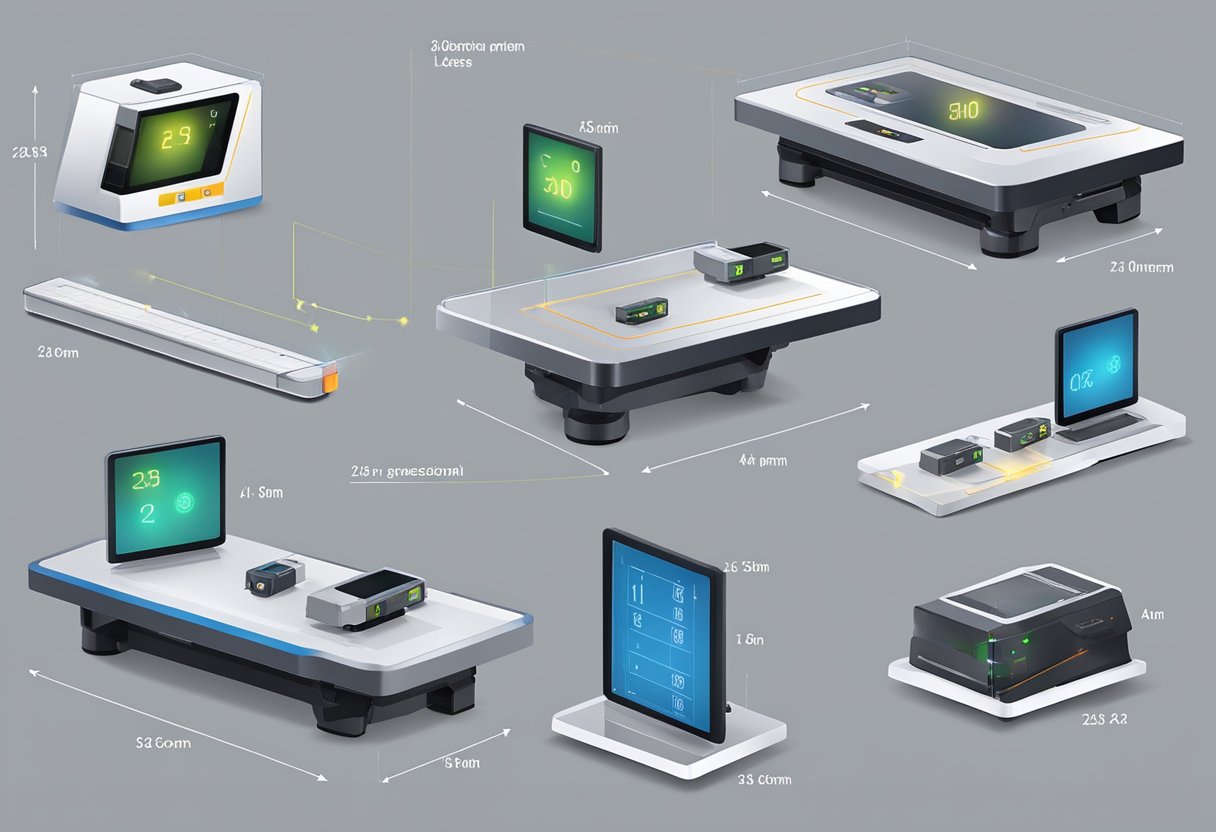Laser distance measurers, the go-to tool for professionals and DIY enthusiasts, offer a convenient and time-saving way to measure distances precisely. Because a laser beam doesn’t require physical contact, they’re great for many uses. Using these technologies has many advantages, including accurate measurements and a significant reduction in time spent, from taking room measures to finding the distance between two points on a building site. This efficiency can make your work more productive and your projects more manageable, leaving you with a sense of accomplishment.
When selecting a laser distance measurer, it’s crucial to consider features such as Bluetooth connectivity, tilt sensors, range, and accuracy. With many models available, finding the ideal option that suits your requirements could be overwhelming. However, by carefully evaluating these features and having the correct information, you can choose the option that best meets your needs. This post is a comprehensive guide to examining laser distance measures from every angle.
It explains how they function, helps you choose the suitable model, and suggests some of the best options. By the end, after reading this, you will know to select a laser distance measurer confidently. This thorough guide instills confidence in your choice, ensuring you feel well-prepared and knowledgeable. Visit our site for more information on Ice Age Tools.
Key Takeaways
- Laser distance measurers are versatile tools with various uses, including, but not limited to, measuring rooms and determining distances on building sites.
- When selecting a laser distance measurer, it is crucial to weigh features like Bluetooth connectivity and tilt sensors against range and accuracy.
- Our top picks for the best laser distance measurers on the market offer options for different needs and budgets.
Understanding Laser Distance Measurers
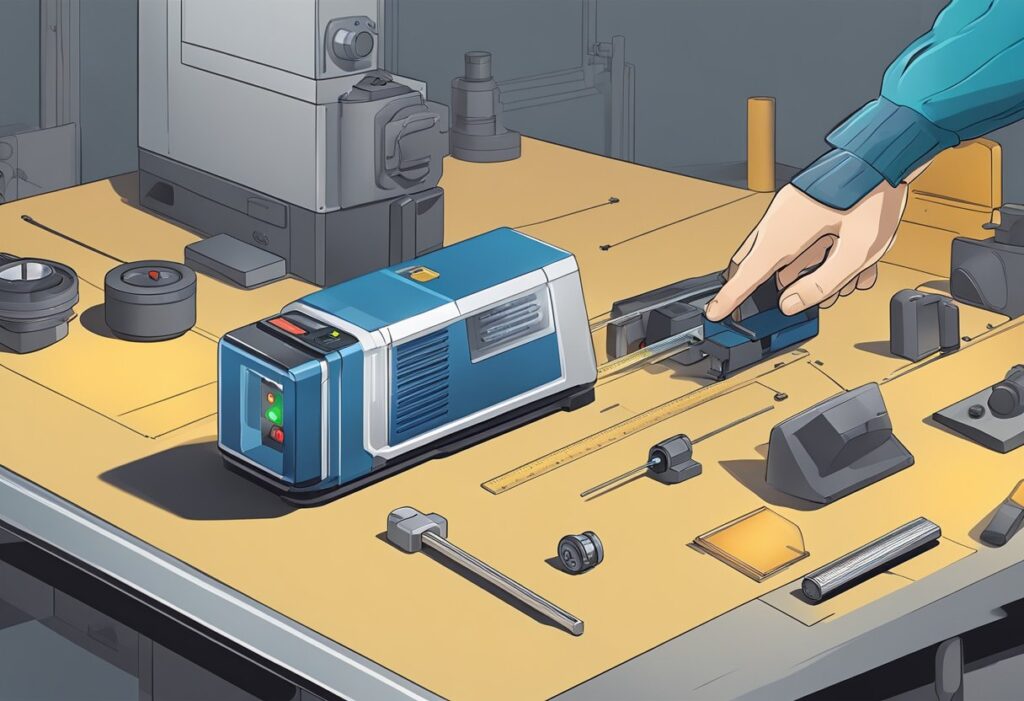
Laser Measure vs. Tape Measure
Laser distance measurers are a modern alternative to traditional tape measures, offering significant advantages. Unlike tape measures that require physical contact with the object, laser distance measurers use a focused beam of light, making them faster and more accurate, especially for long-distance measurements.
Key Features Of Laser Distance Measures
Laser distance measurers possess many advantages that grant them a wide range of applications. Some of the key features to look for include:
- Range: Laser distance measurers have a range of up to several hundred feet, making them ideal for measuring large areas.
- Accuracy: Most models are within 1/16 inch, making them more precise than tape measures.
- Memory: Some models have memory functions that allow storing multiple measurements for later use.
- Bluetooth connectivity: Some models can connect to your mobile device, letting you take measurements and draw up floor plans.
How Laser Distance Measurers Work
Laser distance measurers operate by sending out a laser beam that, after hitting an item, rebounds back to the instrument. The gadget then determines the distance by timing how long the laser takes to and from the object. Some models also use trigonometry to calculate the distance based on the angle of the laser beam.
Laser distance measurers are versatile and accurate tools with many potential uses. Anyone from experienced contractors to do-it-yourselfers can benefit from using one. It will help them save time and get more precise measurements.
Selecting The Right Laser Distance Measurer
When selecting the right laser distance measurer, there are a few key factors to consider. Here are some crucial points to keep in mind:
Accuracy And Precision
Accuracy and precision should be top priorities when choosing a laser distance measurer. Look for a device with a high accuracy level, ideally within +/- 1/16 inch, to ensure your measurements are spot on. Top-rated devices, such as the Leica Disto D2 Laser Distance Measure, offer even greater accuracy, giving you confidence that your measurements are precise.
Range And Measurement Capabilities
When selecting a laser distance measurer, it’s crucial to consider the device’s range and measurement capabilities. Look for a device that has a range that meets your needs, whether you’re measuring small spaces or larger areas. Additionally, it is essential to think about the device’s measurement capabilities. For more involved tasks, some devices have further capabilities that could be useful, such as calculating area or volume. The Bosch GLM 50C is a highly rated device that offers both a wide range and advanced measurement capabilities, ensuring it matches your specific needs.
Size And Portability
Think about its size and portability. Look for a compact and easy device, especially if you’ll use it on the go. The Lexicon 2-in-1 Digital Laser Tape Measure is an excellent choice for those searching for a small, adaptable gadget.
Durability And Material
Durability and the material of the device are also important factors to consider. Look for a device made from high-quality materials and built to last. Additionally, consider whether the device is water-resistant or dust-proof, which can be helpful for those who work in challenging environments. The Fluke Laser Distance Meter is a highly durable device that withstands harsh conditions.
Consider these factors when choosing the best laser distance measurer. Regardless of expertise, anyone can utilize various tools to get precise measurements in the construction sector. This guide aims to educate you on the subject and provide all the information you need to select the most suitable laser distance measurer for your needs.
Advanced Features And Connectivity
Bluetooth Connectivity And Apps
Many laser distance measurers have Bluetooth connectivity, allowing users to transfer measurements to their smartphones or tablets. This capability is a lifesaver for professionals who often need to exchange data with clients or colleagues. Some models even come with apps that can store and organize measurement data. For example, the Bosch GLM 400CL comes with the MeasureOn app, which allows users to create floor plans and add notes to their measurements.
Additional Functionalities
For example, using the Pythagorean theorem, a fundamental principle in geometry, some models can measure angles, calculate areas and volumes, and even calculate indirect distances.
Display And Visibility
The screen is a crucial component when looking for a laser distance measurer. Some models come with LCD screens, while others have backlit LED screens. The display should be easy to read, even in low-light conditions. Some models also come with a backlit screen, which makes it easier to read measurements in bright sunlight.
Advanced features and connectivity are essential when choosing a laser distance measurer. Bluetooth connectivity and apps can help share data, while additional functionalities can make it easier to take measurements. The display should be easy to read, even in low-light conditions.
Top Picks For Laser Distance Measurers
Many factors must be thought about when looking for a laser rangefinder. Costs, range, precision, and durability are essential. After researching and testing various products, the following are the top picks for laser distance measurers.
RockSeed Laser Measure
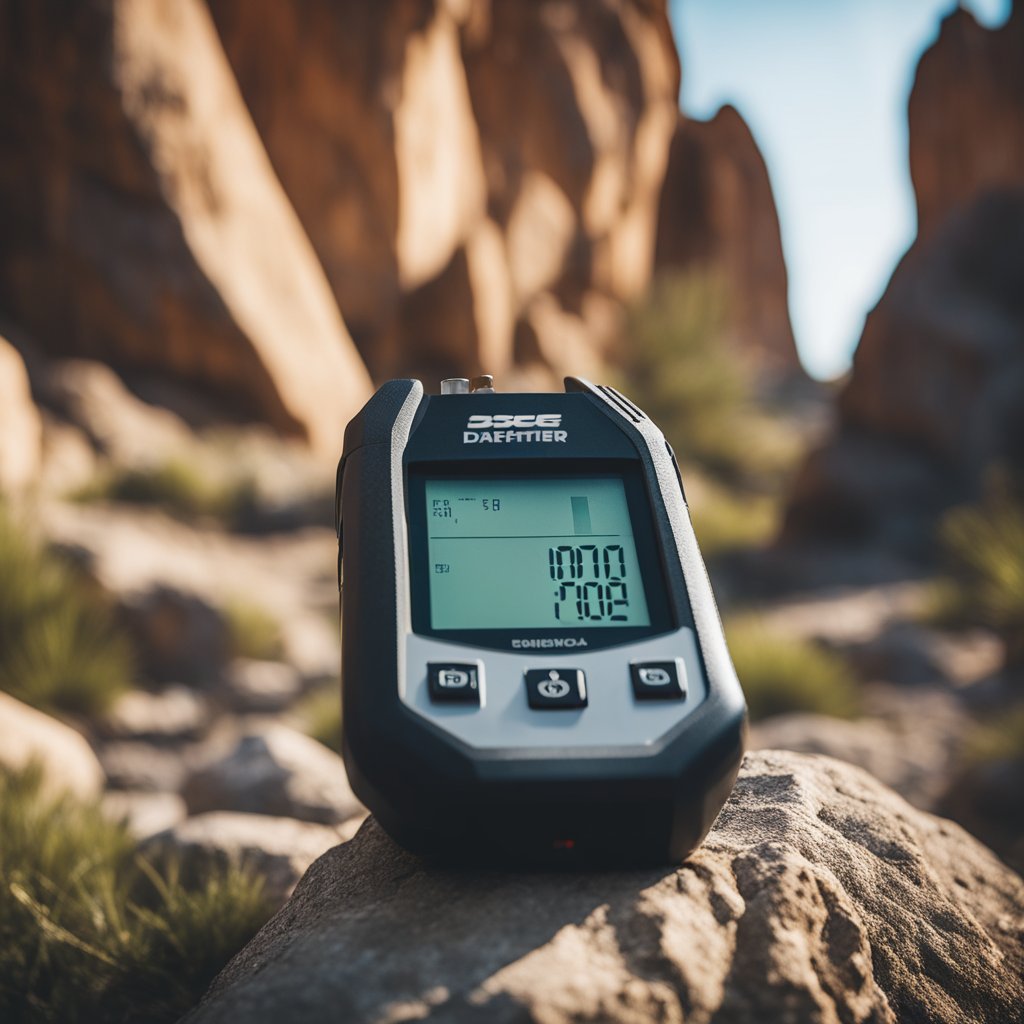
We recently used the RockSeed Laser Measure for various projects around the house. The accuracy of the measurements really stood out, making it easy to get precise results. The option to switch between meters, inches, and feet is a fantastic feature. This flexibility allows us to work in our preferred units without any hassle.
The large LCD screen with backlighting is a helpful touch. Whether in bright light or darker corners, we could easily see our measurements. Plus, the mute option is great for quieter environments, like libraries or classrooms, allowing us to use it without disturbing anyone.
Its sturdy build and waterproof design give us confidence that it will last through tough jobs. We appreciated the included wrist strap, which made it easy to hold and transport. It has really become a key tool in our measuring arsenal. Overall, we recommend the RockSeed Laser Measure for anyone needing a reliable, accurate measuring tool.
Pros
- High accuracy with a ±1/16 inch margin
- User-friendly with different measurement modes
- Portable and durable design
Cons
- Visible laser beam may be hard to see outdoors
- Requires batteries which need replacing occasionally
- Some features may take time to master
BOSCH GLM165-40 BLAZE Pro
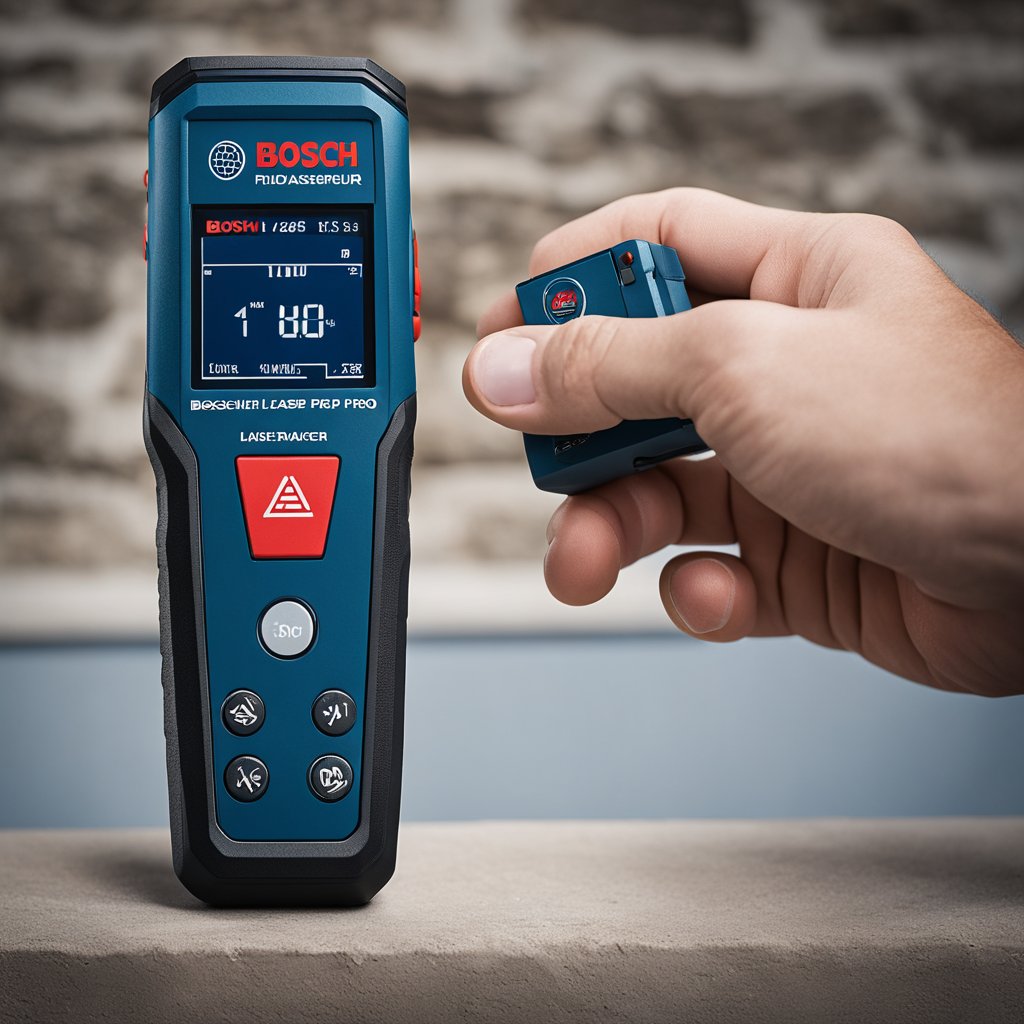
We recently used the Bosch BLAZE Pro GLM165-40 during a home renovation project. Its compact size made it easy to carry around while also providing quick access for measurements. The backlit display helped us see the readings clearly, even in dimly lit rooms. This feature alone saved us time and reduced errors.
Measuring distances was straightforward. We appreciated the real-time measurement mode, which adjusted as we moved closer or further from our target. This felt much more efficient than a traditional tape measure, eliminating the need for a second person to hold it.
While the device performed well most of the time, we noticed that on particularly bright days, the laser could be hard to see. Also, the lack of space for extra batteries was a small inconvenience but didn’t overshadow the overall usefulness of this tool. If you need precision and convenience in your measurements, this laser distance measurer is worth considering.
Pros
- Compact design fits easily in pockets.
- Clear backlit display for easy reading.
- Multiple measuring capabilities, including area and volume.
Cons
- May struggle on very bright days.
- No dedicated storage for spare batteries.
- A bit pricey compared to basic models.
Prexiso Laser Measure
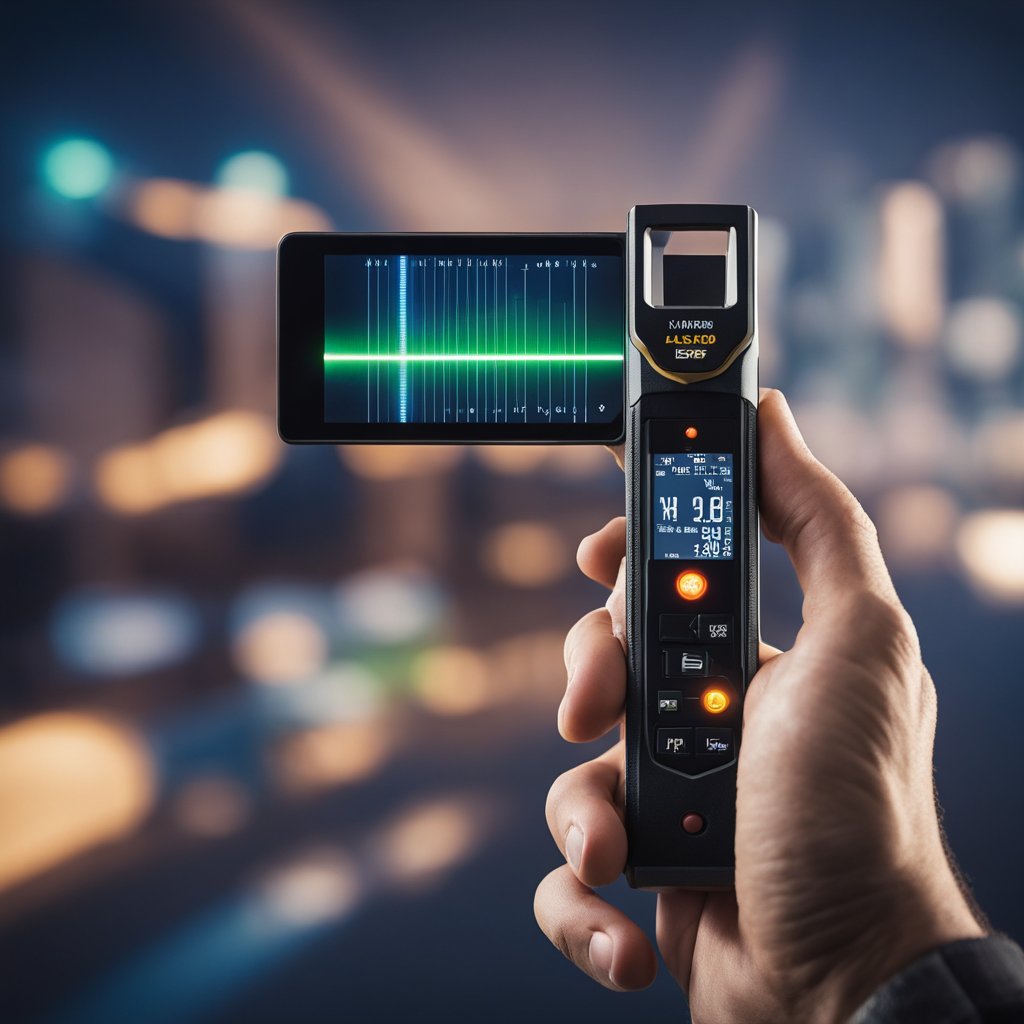
We recently tested the Prexiso Laser Measure and were impressed by its performance. The green beam is clear and visible, even in well-lit rooms. It made taking measurements quick and easy, especially when marking out spaces for renovation projects.
The memory function is a standout feature. We loved how it saves multiple measurements, allowing us to work efficiently without jotting things down. The different measurement modes, including area and volume, were also handy as we explored our options for room layouts.
While this laser measure excels indoors, we found its effectiveness diminished in bright outdoor conditions. Users should be cautious about this if they plan to use it outside frequently. Overall, this tool is a solid choice for anyone looking to upgrade their measuring options without breaking the bank.
Pros
- Bright green laser is easy to see indoors and can reach up to 265 feet.
- The memory feature stores up to 30 measurements for quick access.
- Rechargeable battery saves money and is environmentally friendly.
Cons
- It is not the best choice for outdoor use in bright sunlight.
- The learning curve may be steep for some users due to features.
- The unit may feel a bit delicate if dropped.
Kiprim Laser Distance Measurer LD50E
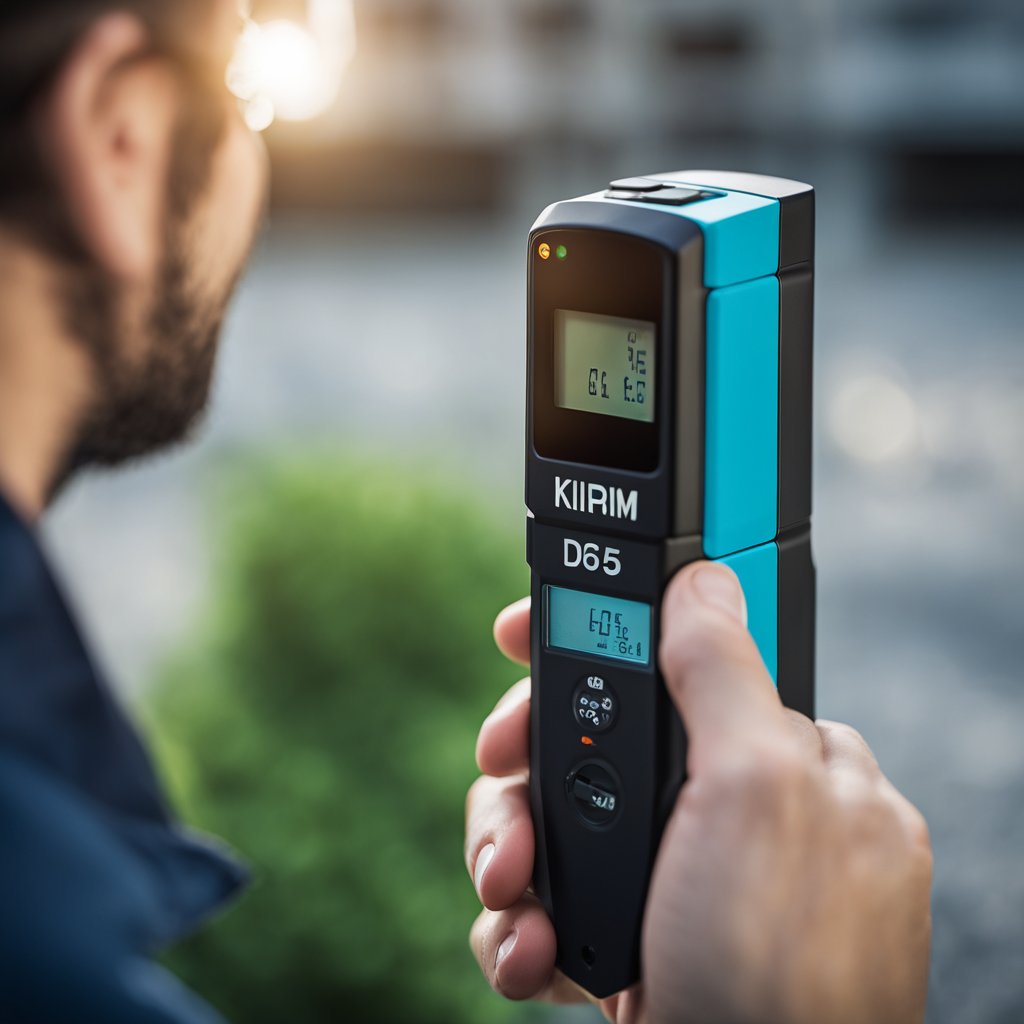
Using the Kiprim LD50E has made our measuring tasks much easier. Its accuracy means we can trust the numbers it provides, whether we’re measuring a room for renovation or checking distances for construction.
Another great feature is the large backlit display. We often work in areas with low light, and this display is clear and easy to read. Plus, it’s lightweight, making it perfect for carrying around on jobs.
In terms of functionality, the Kiprim offers a range of options, including area, volume, and continuous measurements. This versatility allows us to tackle different projects without switching tools. While it has some limitations outside in bright conditions, overall, we find it to be a reliable choice for both professionals and DIY enthusiasts.
Pros
- Accurate measurements within ±1/16 inches over long distances.
- Easy-to-read LCD screen with backlight for visibility in any lighting.
- Versatile with multiple measurement functions for various tasks.
Cons
- The laser can be hard to see in bright sunlight.
- Calibration offsets can occur, potentially affecting accuracy.
- Limited outdoor range due to laser visibility issues.
Inkerma Laser Distance Meter
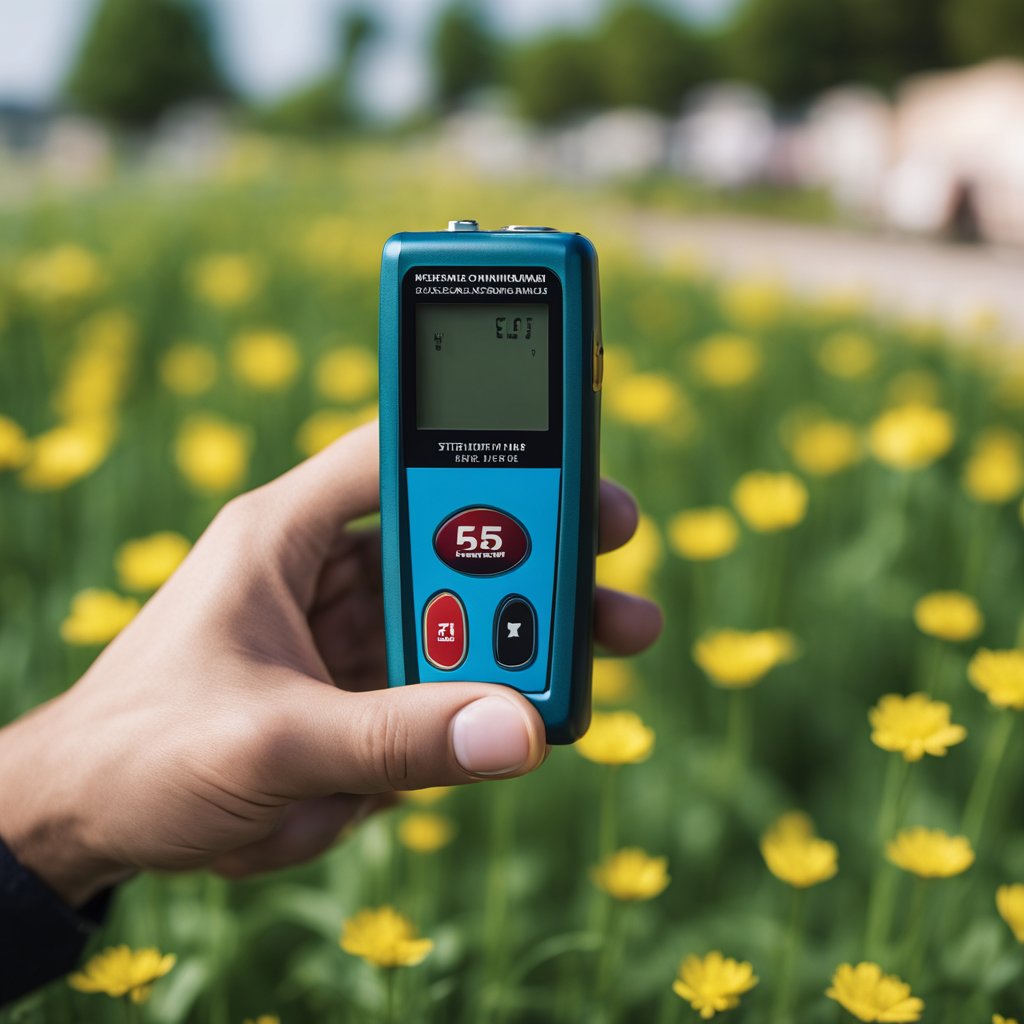
Using the Inkerma laser distance meter has been a game-changer for us. The ability to measure in two directions at once really cuts down on the time spent moving around. We appreciate the tilt angle feature that makes it simple to get indirect measurements without straining.
We also like the bright, color backlit display, which is not only easy to read but can also be rotated. Keeping track of up to 100 measurements is a real plus, especially when working on bigger projects. This feature is beneficial for anyone from DIY enthusiasts to professionals in construction.
While we enjoy its many features, we did notice the battery life doesn’t always meet our expectations, especially during long jobs. Also, some users may need time to adjust if they’re coming from a simpler measuring device. Overall, the Inkerma Laser Distance Meter stands out as a reliable tool that makes measuring tasks easier.
Pros
- Measures in two directions for added convenience.
- Color backlit display makes reading easy in different lighting.
- Multiple measuring modes enhance versatility.
Cons
- Battery life could be better with heavy use.
- Some users mention a learning curve.
- Occasional issues with accuracy reported.
Practical Applications Of Laser Distance Measurers

Laser distance measurers are versatile tools in various fields, including construction, design, art, and industrial settings. This section will explore some practical applications of laser distance measurers.
In Construction And Design
Laser distance measurers are invaluable tools in construction and design. They can accurately measure spaces, such as room dimensions, ceiling heights, and floor plans. This information is essential for architects, builders, and interior designers to draw precise blueprints.
Moreover, laser distance measurers can help estimate material costs. For example, depending on the number of walls, they can determine how many floors may be tiled or painted.
For Art And Creative Projects
The artistic and creative communities have found new uses for laser distance measurers. They can help artists take precise measurements for installations, sculptures, and other artworks and calculate the dimensions of canvases or frames for paintings.
Furthermore, laser distance measurers can help in DIY projects, such as building furniture or installing shelves. They can accurately measure spaces and materials, ensuring that everything fits perfectly.
In Industrial And Factory Settings
Laser distance measurers are also valuable for industrial and factory settings. They can measure machinery, equipment, and products. This information is crucial for manufacturers to ensure their products meet quality standards.
Moreover, laser distance measurers can help optimize factory layouts and workflows. They can accurately measure spaces such as production lines, storage areas, and loading docks, which can help factory managers make informed decisions about improving their operations.
Laser distance measurers are versatile tools with practical applications in various fields, including construction, design, art, and industrial settings. By taking accurate measurements, they can help professionals and DIY enthusiasts save time, money, and effort.
Technical Specifications And Standards
Measuring Units And Conversion
Laser distance measurers come with different measuring units, including metric and imperial units. The metric system is commonly used in most countries worldwide, while the imperial system has its primary market in the USA. When purchasing a laser distance measurer, you must ensure that it supports the measuring unit you are comfortable with. Some laser distance measurers also support conversion between different units, making switching between metric and imperial units easier.
Battery Life And Power Options
Battery life is an important consideration when selecting a laser distance measurer. Most laser distance measurers use AAA batteries or rechargeable batteries. AAA batteries are easily replaceable and readily available but may not last as long as rechargeable batteries. Rechargeable batteries, on the other hand, may last longer but may require a longer charging time. Some laser distance measurers also include an indication that lets you know when the battery is getting low.
Certifications And Compliance
When purchasing a laser distance measurer, it is essential to meet the necessary certifications and compliance standards. Some common certifications and compliance standards include CE, FCC, and RoHS. CE certification ensures that the goods comply with EU health, safety, and environmental preservation regulations. Look for the FCC logo to prove that a product satisfies the Federal Communications Commission’s requirements for electromagnetic interference. The product’s RoHS certification guarantees the absence of any potentially harmful compounds.
“When selecting a laser distance measurer, it is essential to consider the measuring units, battery life and power options, certifications, and compliance guidelines to guarantee that what you receive is ideal.”
Maintenance And Troubleshooting
Caring For Your Laser Distance Measurer
Maintaining your laser distance measurer Using it properly can make it last longer and ensure precise readings. Here are some tips to help you care for your laser distance measurer:
- Please keep it clean: Regularly clean the lens with a gentle towel to soak up any spills or grime. Be careful not to scratch the lens with abrasive objects or strong chemicals.
- Store it properly: When not in use, store your laser distance measurer safeguarded from harm caused by drops or impacts using a protective case or bag.
- Replace batteries: Always replace fresh batteries when the indicator shows low power. Doing so will keep your laser distance measuring gadget in top shape and guarantee precise readings.
Common Issues And Resolutions
Even with proper care, laser distance measurers can sometimes experience issues. Here are some common issues and their resolutions:
| Issue | Resolution |
| Inaccurate measurements |
1. Check the battery and replace it if necessary. |
| Warnings and errors | The user handbook can help you find the error message and how to fix it. If you still need help, contact the maker. |
| Display issues | Check the battery and replace it if necessary. Ensure that the display is not damaged or obstructed by any objects. |
| The unit is not turning on | Check the battery and replace it if necessary. Ensure that the battery is in the right place. If you need further help, contact the maker. |
It is important to note that laser distance measurers usually have a warranty covering defects in materials and artistry. If you experience any issues with your laser distance measurer, refer to the warranty terms and contact the manufacturer for repair or replacement. Some manufacturers also offer maintenance and repair services for a fee.
Integration With Other Tools And Software
Compatibility With CAD Software
Laser distance measurers are valuable tools for architects, engineers, and construction professionals. One key feature these professionals look for when choosing a laser distance measurer is compatibility with Computer-Aided Design (CAD) software.
The Leica DISTO D2 New 330ft Laser Distance Measure is a popular choice for professionals due to its compatibility with AutoCAD and other CAD software. It can export measurements in DXF format and is a breeze to load from CAD software. Similarly, the DeWalt Tool Connect 100-Foot Laser Distance Measurer can export measurements to the MeasureOn app, which loads into computer-aided design software afterward.
Exporting Measurements And Floor Plans
In addition to CAD software, laser distance measurers can export measurements and floor plans to other tools and software. The Bosch GLM 50C can export measurements to the MeasureOn app, which is an excellent tool for drawing out blueprints and sketches. This program is a lifesaver for construction sites since it allows users to annotate their measurements with photos and videos.
The Leica DISTO D2 New 330ft Laser Distance Measure also includes Bluetooth, allowing users to export measurements to their smartphones or tablets. Professionals who often need to collaborate on floor layouts and measurements may find this tool invaluable.
Laser distance measurers are versatile tools compatible with various supplementary programs. Before purchasing, professionals should consider whether the laser distance measurer is compatible with their existing tools and software.
Final Considerations Before Purchase
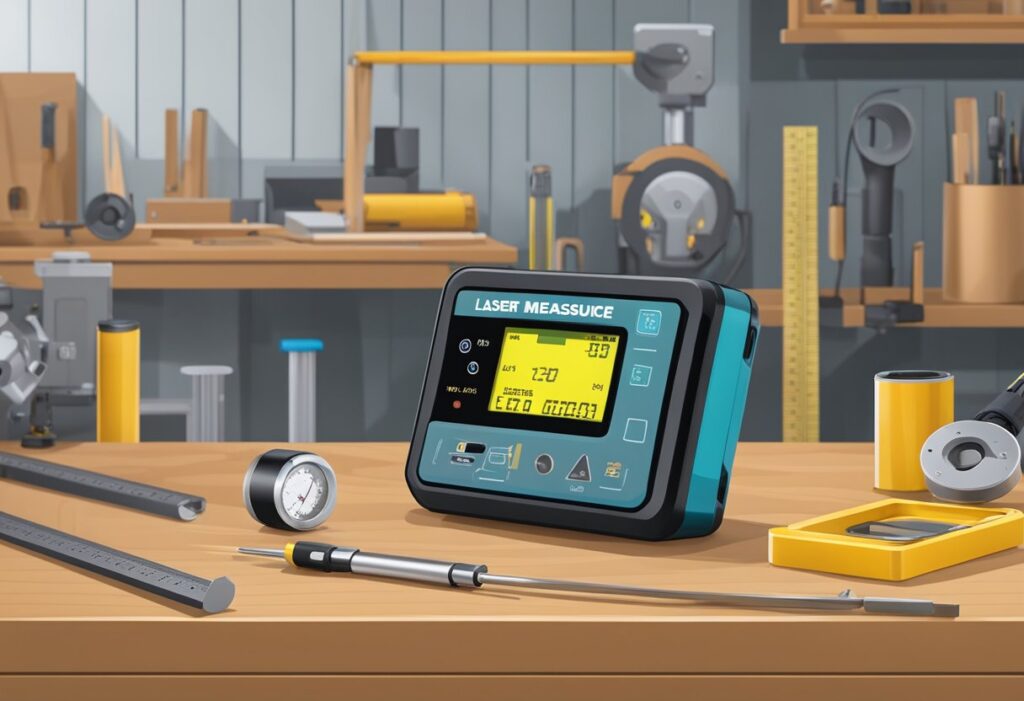
When purchasing a laser distance measurer, assessing your requirements before settling on a model is wise. Here are some factors to consider:
Evaluating Your Specific Needs
- Range: Consider the maximum distance you need to measure and choose a model with a range that meets your needs. A basic model with a shorter range may be sufficient if you only need to measure short distances.
- Accuracy: If you need highly accurate measurements, look for a model with a smaller margin of error. Some models offer an accuracy of up to ±1mm, while others have an accuracy of ±0.2mm/±1/16 inch.
- Features: Different models have different features, such as memory functions, tilt sensors, and Bluetooth connectivity. Consider which features are important to you and choose a model that offers those features.
Comparing Prices And Value
In the long run, the initial investment and the device’s usefulness should, as one calculates, the benefits and drawbacks. Here are some factors to consider:
- Value: Look for a model that offers the best value for your money. Consider the features offered, the accuracy of the measurements, and the device’s overall quality.
- Budget Picks: If you are tight, consider a budget pick model. These models may offer only some of the characteristics included in more expensive models but can deliver precise measurements at a lower cost.
- Offer: Look for models with special offers, such as free accessories or extended warranties. These offers can add value to your purchase and make a more expensive model more affordable in the long run.
When choosing a laser distance measurer, evaluating your specific needs and comparing prices and values is essential to finding the best model for you. With a suitable device, you can make accurate measurements quickly and easily, saving time and effort.
Frequently Asked Questions
What Are The Best Laser Distance Measurers Available On Amazon?
When it comes to purchasing a laser distance measurer on Amazon, there are several options available. Some of the best-rated laser distance measurers on Amazon are the Bosch GLM 20 Compact Laser Distance Measure, the Tacklife HD60 Classic Laser Measure, and the Leica DISTO D2 New 330ft Laser Distance Measure. Customers love these models because they are accurate, simple, and long-lasting.
How Do Bosch Laser Measures Compare To Other Brands?
Bosch is a leading brand in the laser distance measuring tool market, known for its high-quality products. Bosch laser measures are known for their accuracy, durability, and ease of use. They also have features like backlit displays, memory storage, and Bluetooth connectivity. Compared to other brands, Bosch laser measures are generally more expensive, but they offer superior performance and reliability.
Which Laser Measure Is Most Suitable For Outdoor Use?
When using a laser distance meter outdoors, choosing a model that can endure harsh weather and direct sunshine is of the utmost importance. The Leica DISTO X4 and the Fluke 424D are some of the best outdoor laser distance meters. These models are rugged, weather-resistant, and offer long-range measurements.
Can You Recommend A Laser Measure That Is Ideal For Architects?
Architects require high-precision laser measuring tools that can accurately measure distances and angles. One of the best laser measurements for architects is the Leica DISTO D810 Touch Laser Distance Meter. This model offers advanced features like touchscreen technology, a 360-degree tilt sensor, and Bluetooth connectivity. It also has a range of measurement modes, including Pythagoras, stakeout, and smart horizontal.
What Makes A Laser Distance Measure Highly Accurate?
Several factors contribute to a laser distance measurer’s accuracy. These include the quality of the laser diode, the sensor technology used to detect the laser beam, and the software algorithms used to calculate the measurements. A high-quality laser distance measurer will have a stable laser diode, a sensitive sensor, and advanced software that can compensate for environmental factors such as temperature and humidity.
What Are The Benefits Of Investing In A High-Precision Laser Measuring Tool?
Investing in a high-precision laser measuring tool can offer several benefits, including increased accuracy, improved efficiency, and reduced errors. These instruments provide accurate measurements quickly, allowing users to save time and work more productively. They are also ideal for many other fields, including building, design, and engineering.

